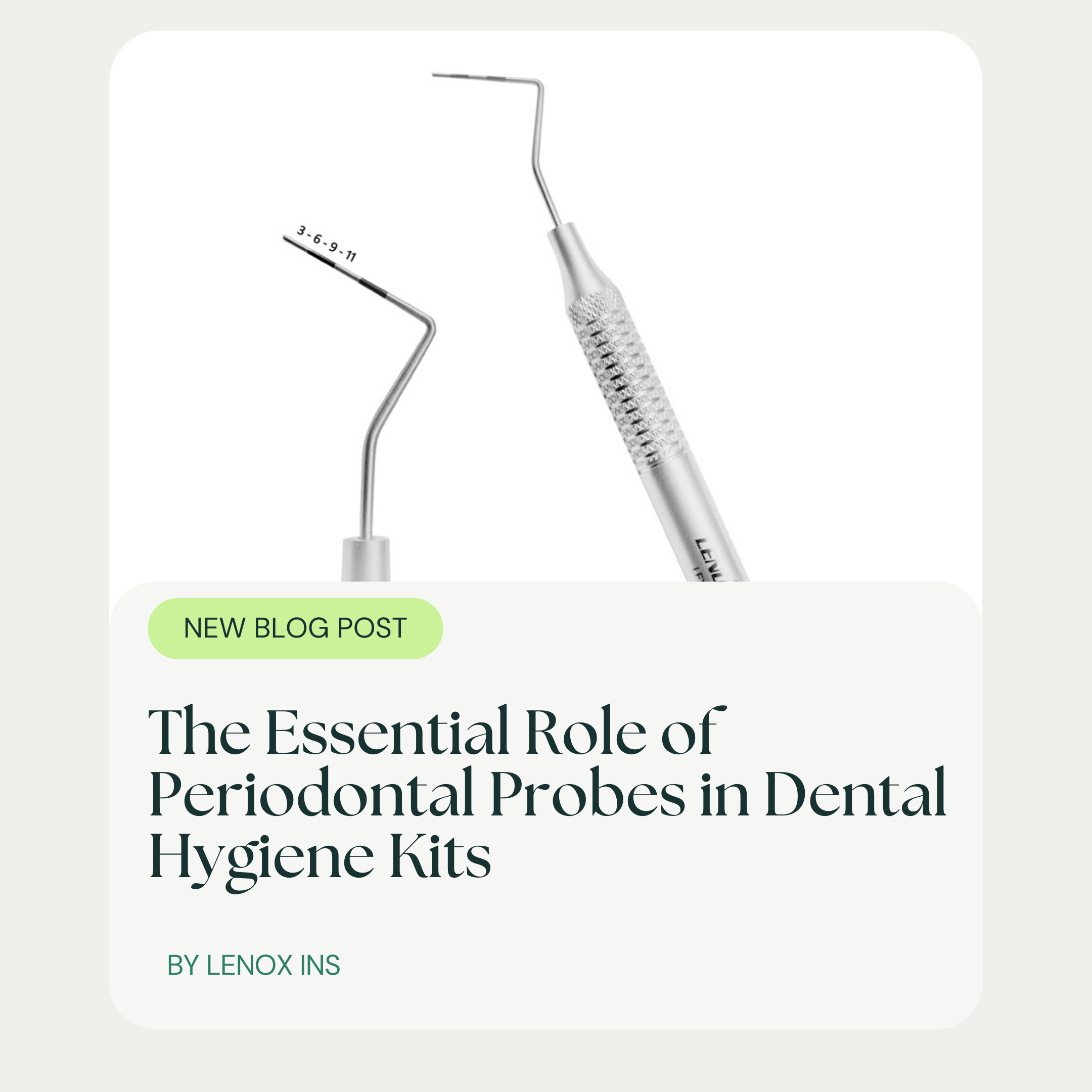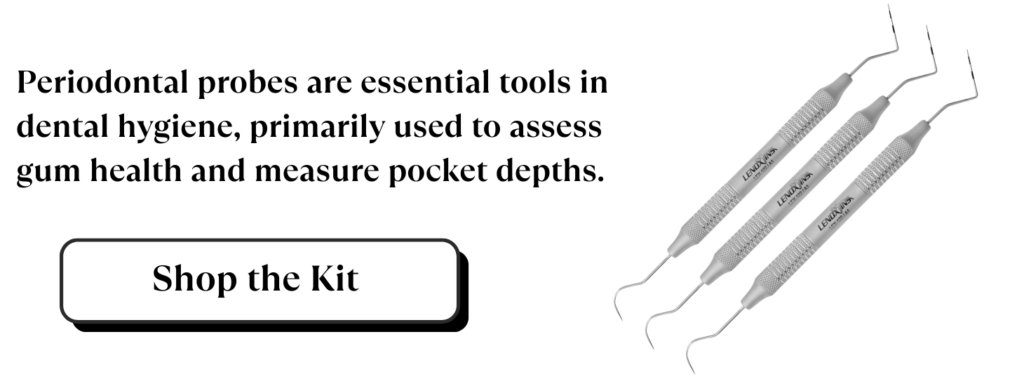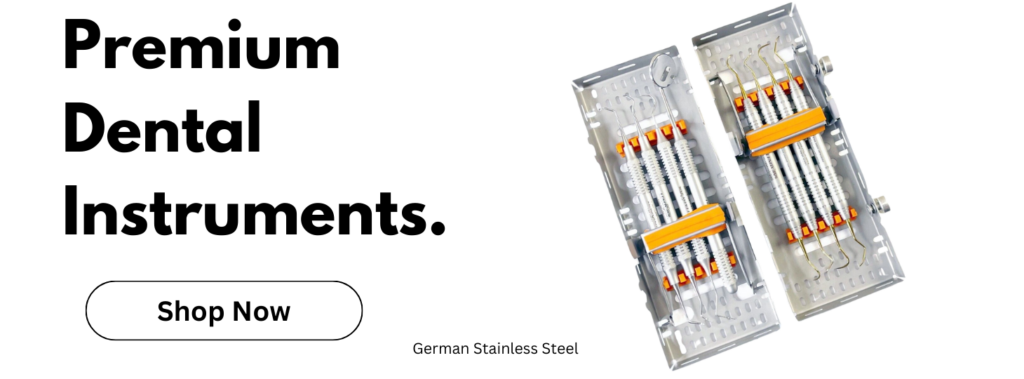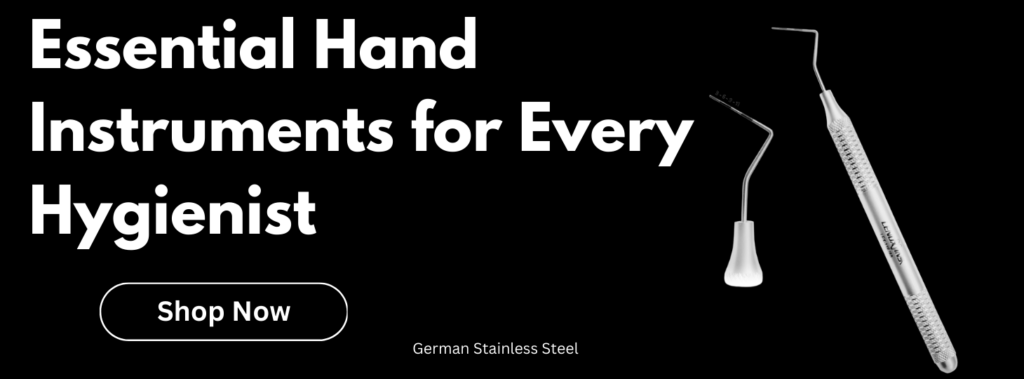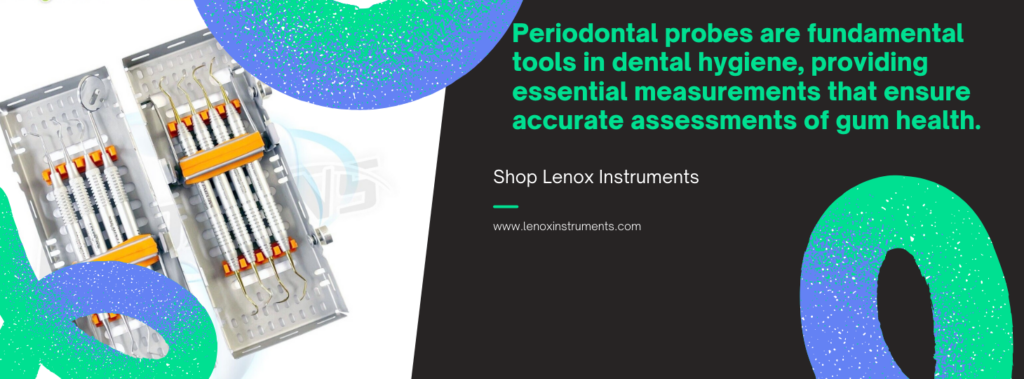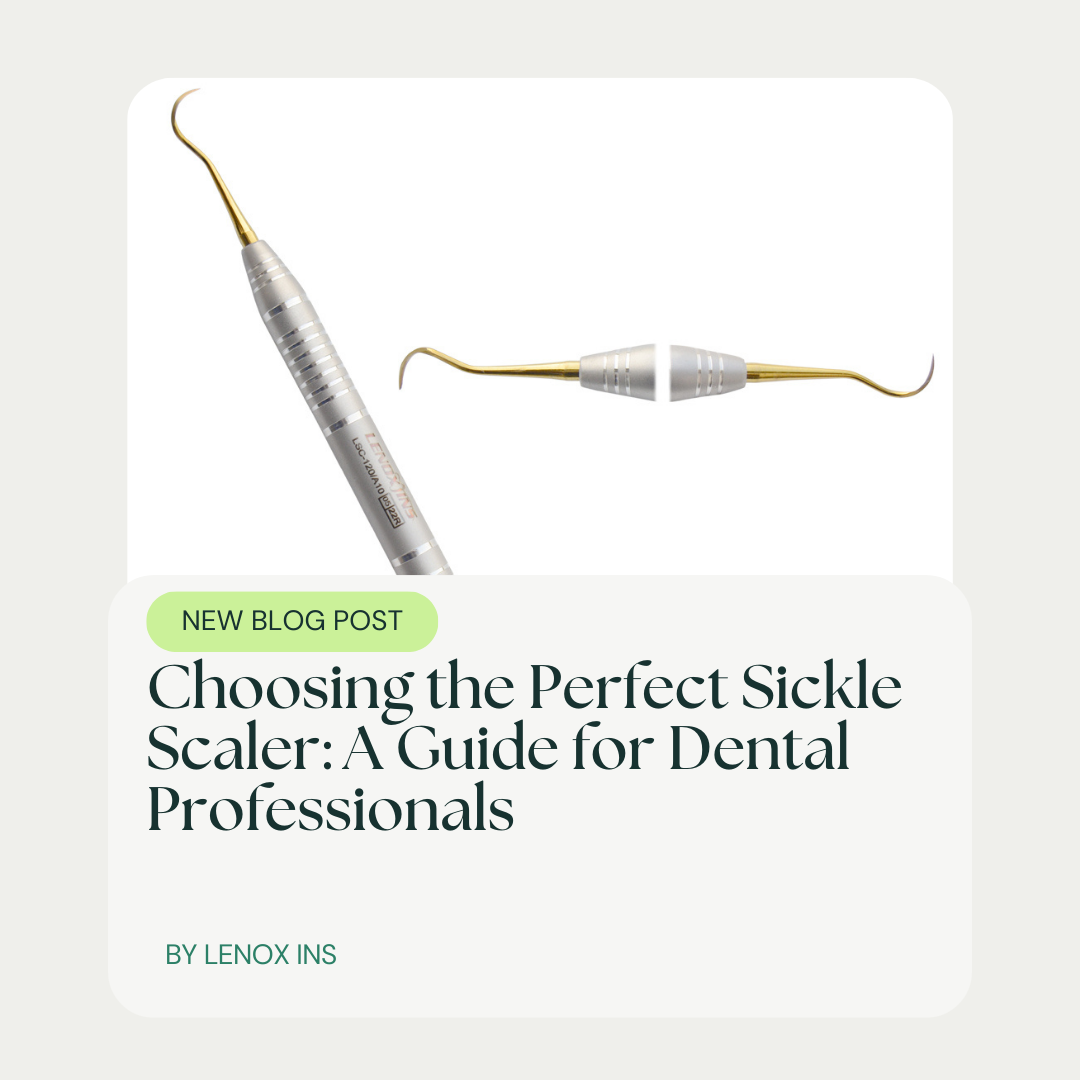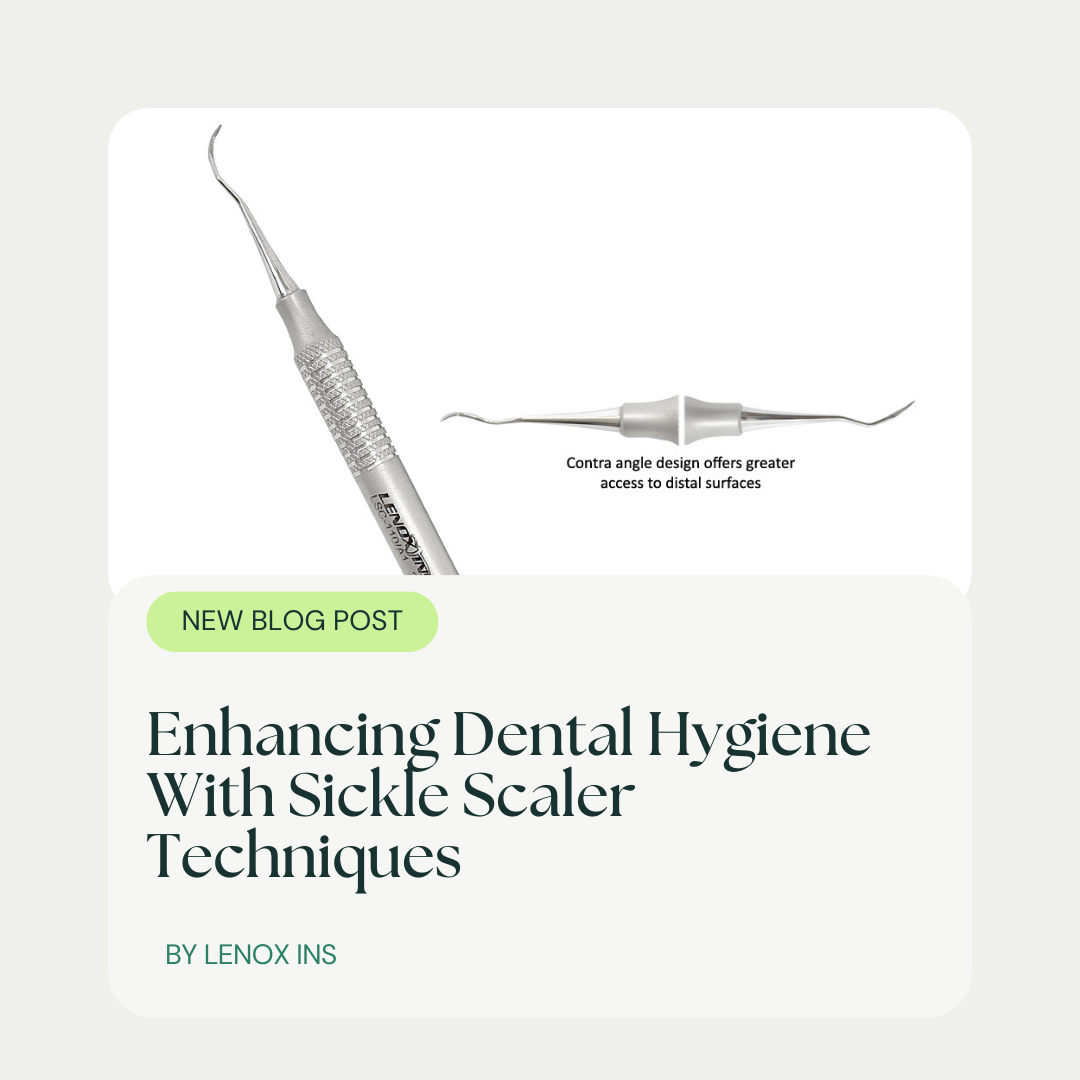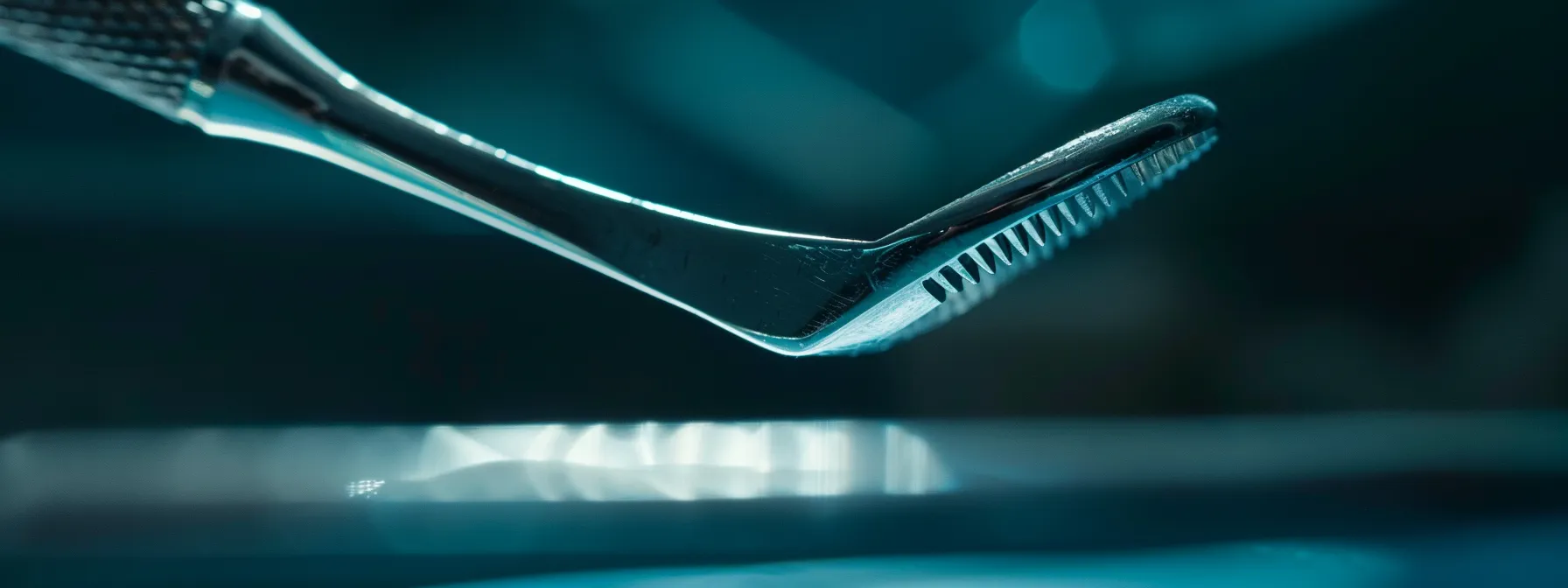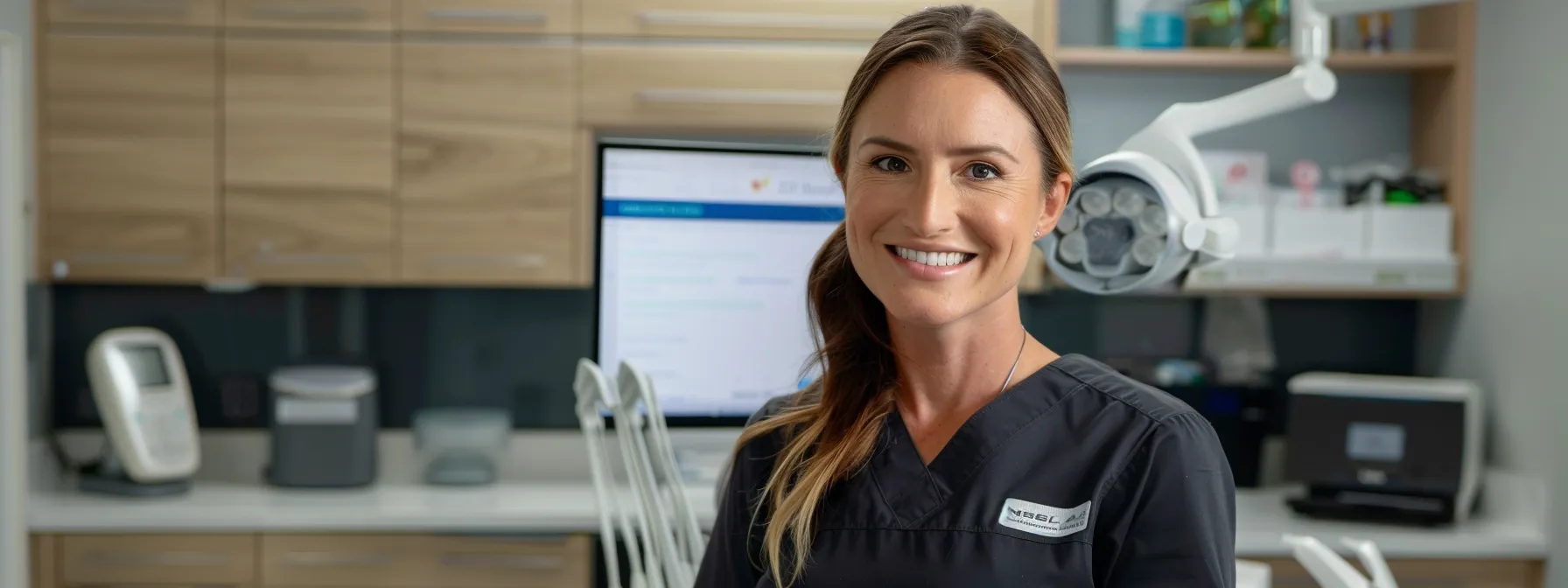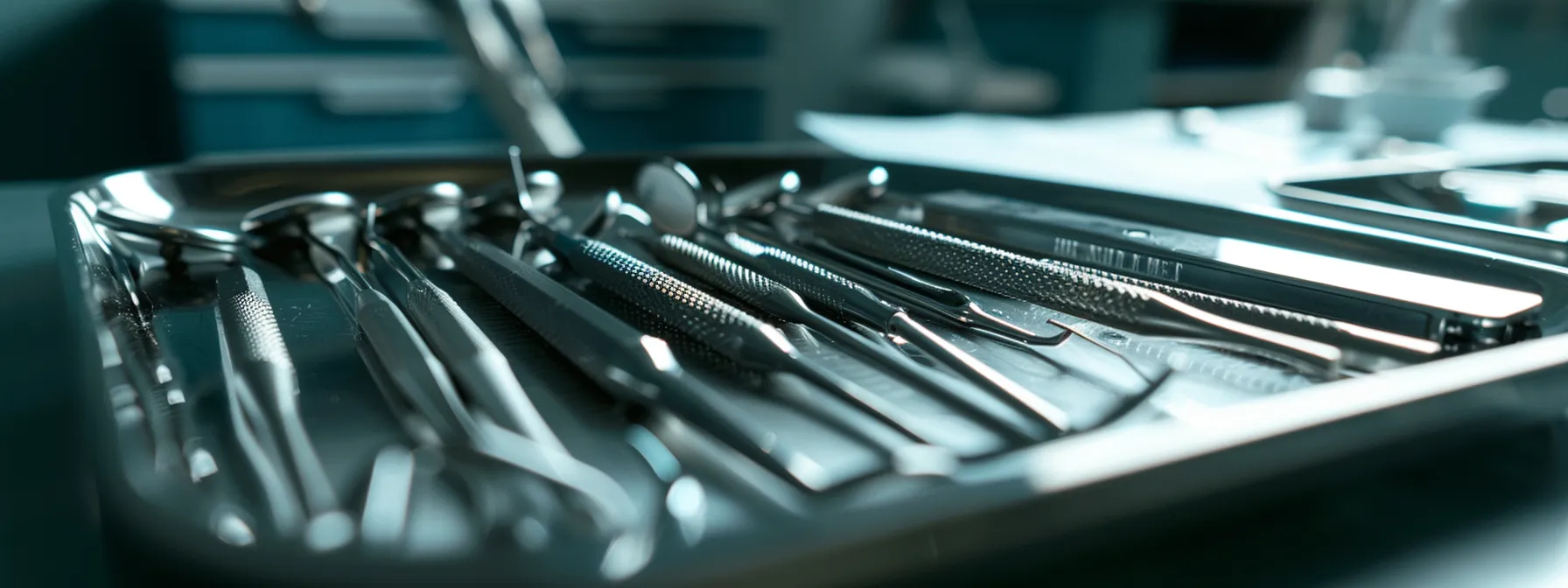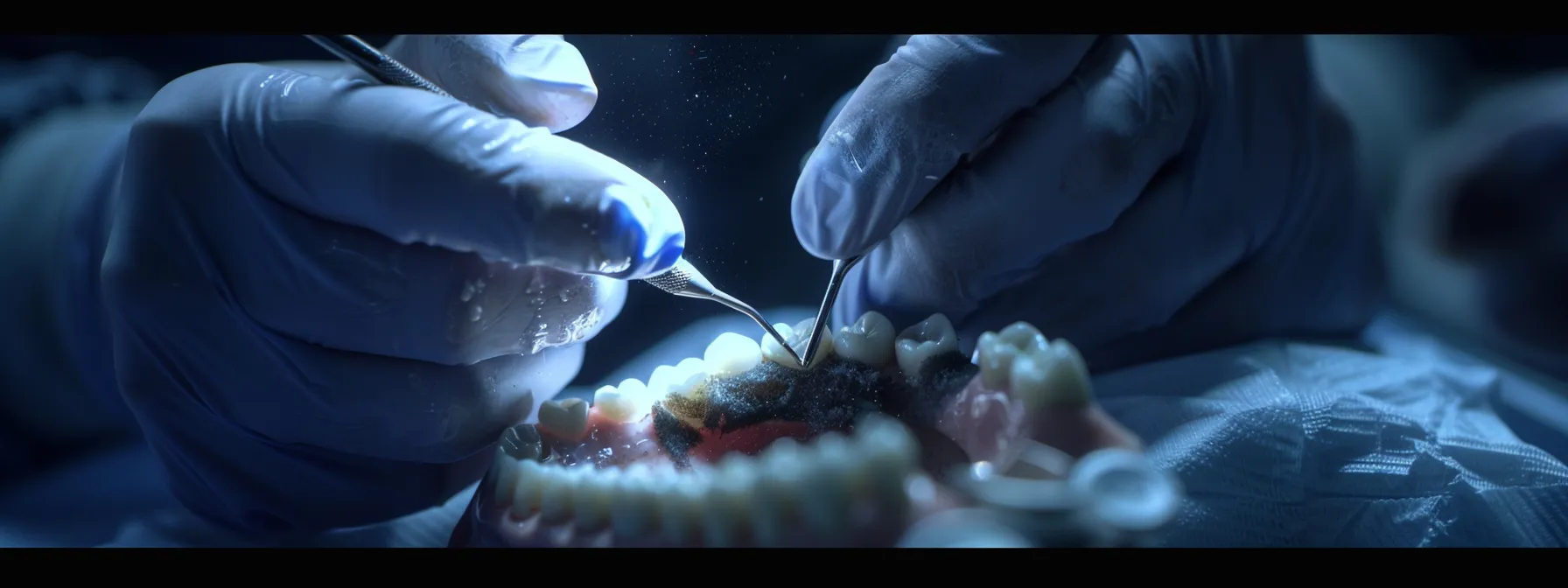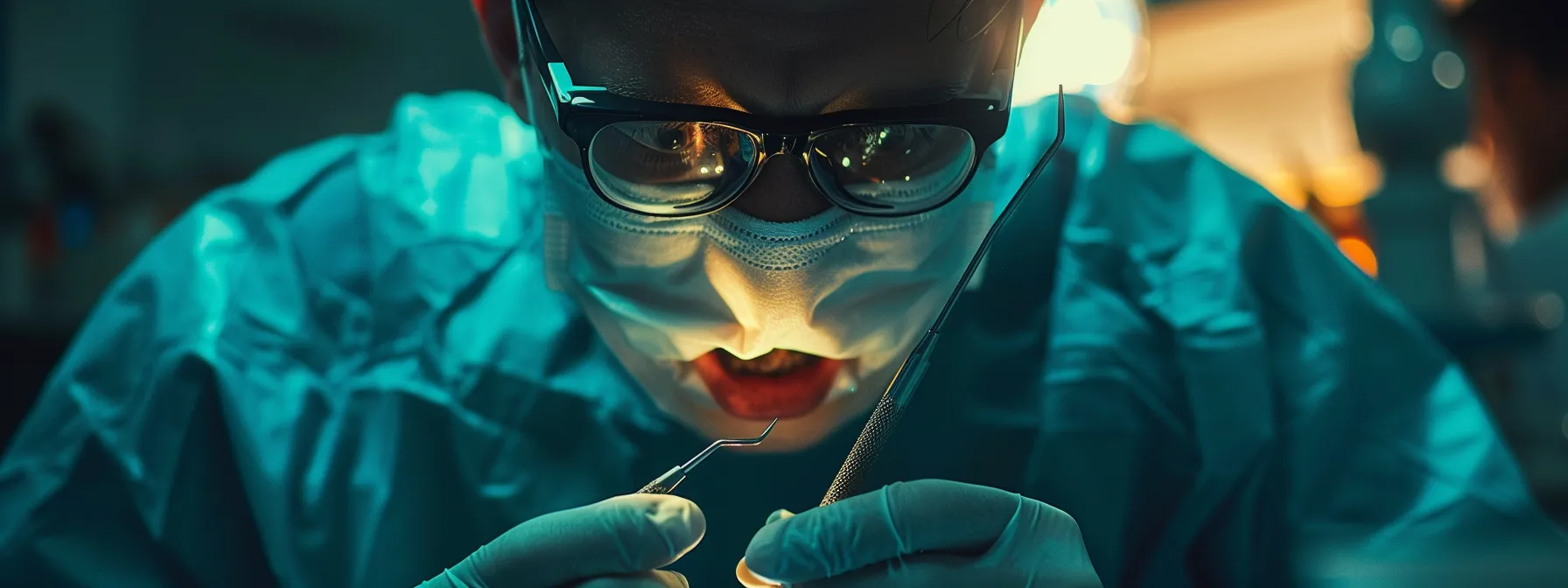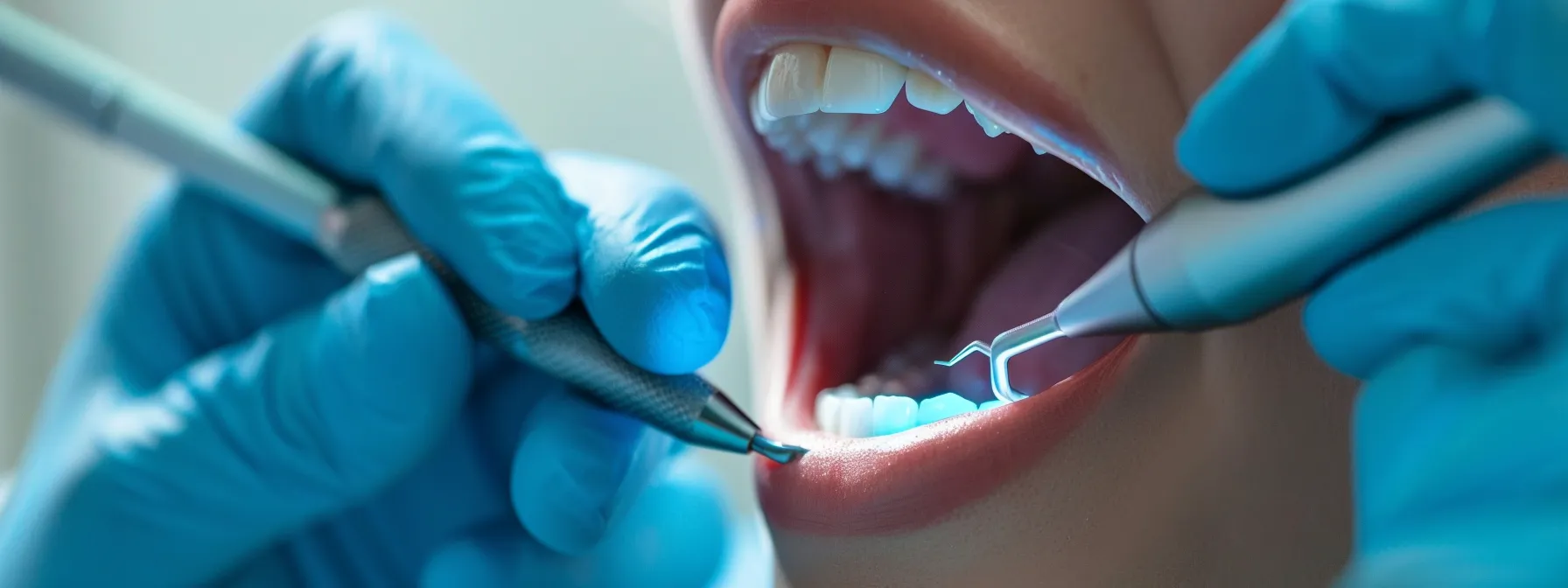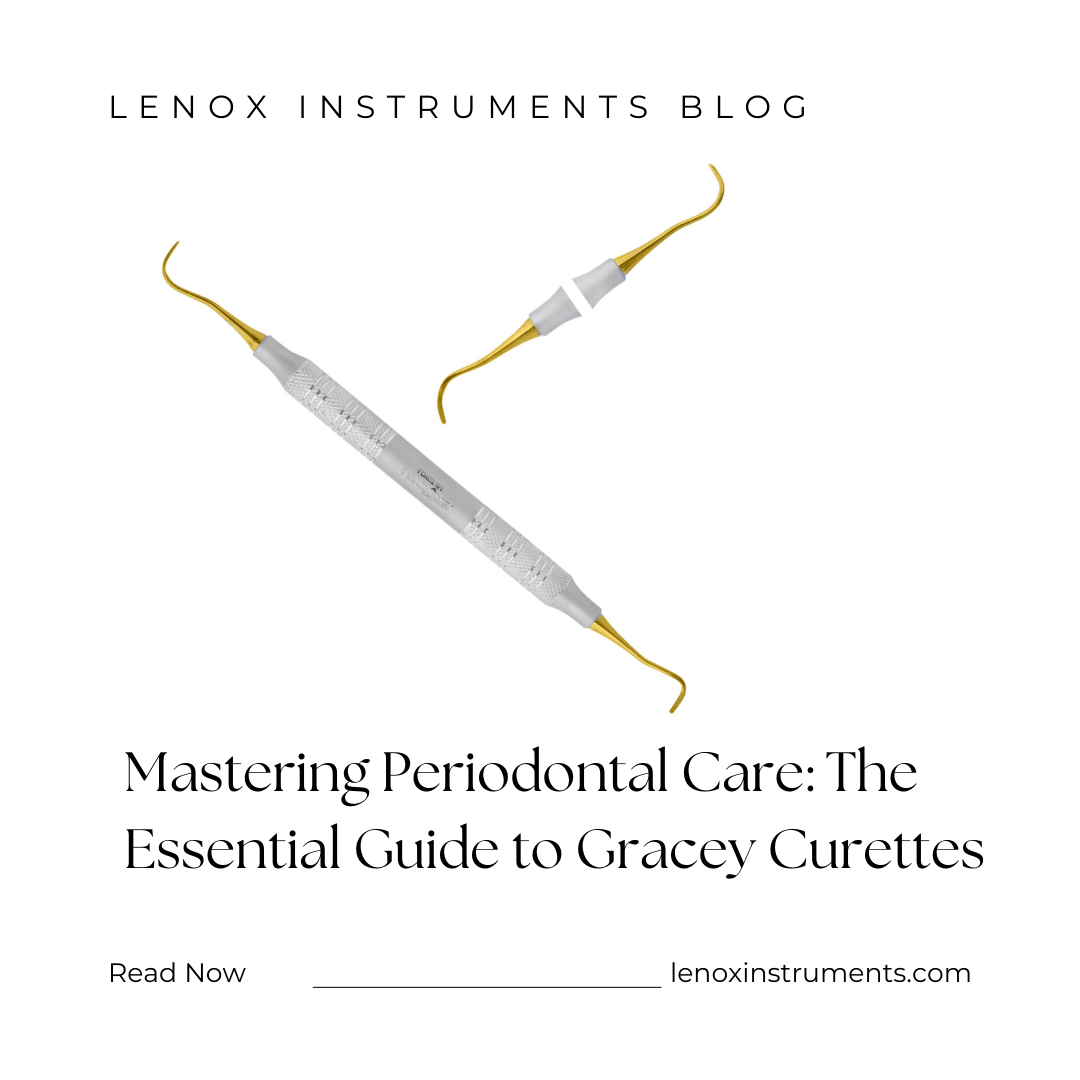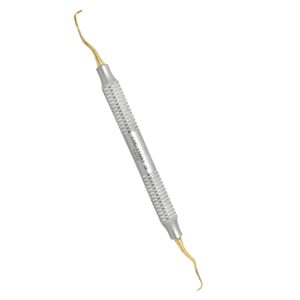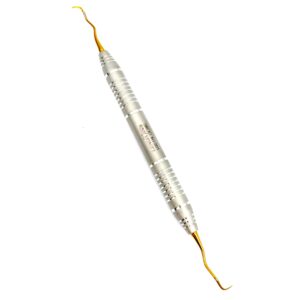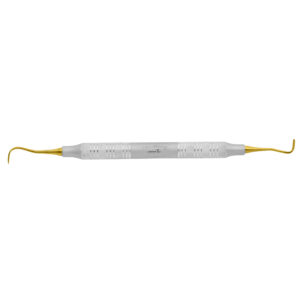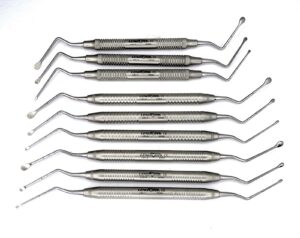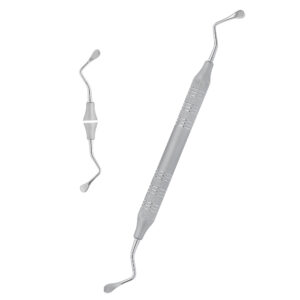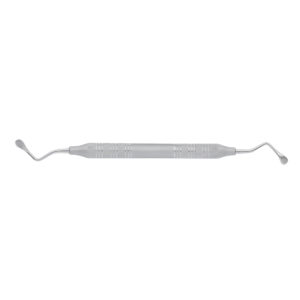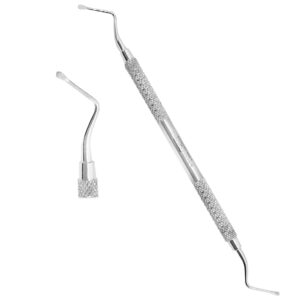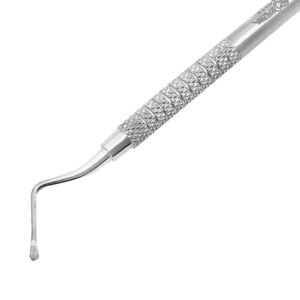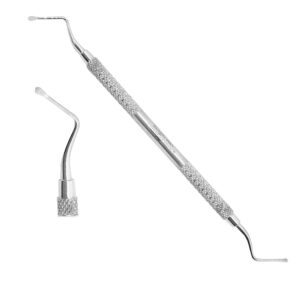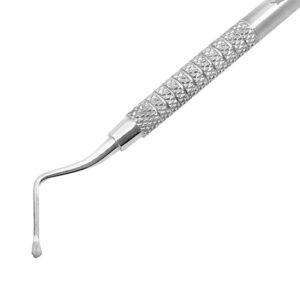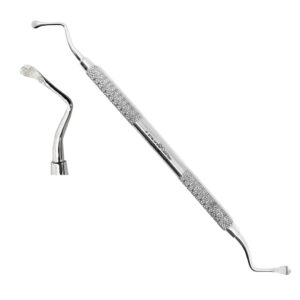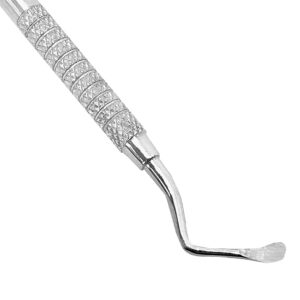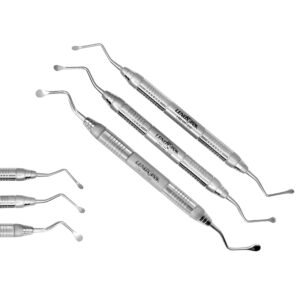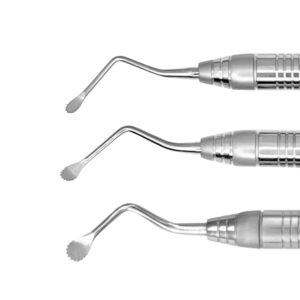Microsurgical Techniques in Periodontics: Tools for the Modern Specialist
- Posted May 20, 2025
- by 104
Microsurgical Techniques in Periodontics: Tools for the Modern Specialist
Microsurgical techniques in periodontics are revolutionizing how periodontal disease is treated by enhancing precision, reducing tissue trauma, and ultimately improving patient outcomes. With advancements in surgical instruments and technology — including modern periodontal surgical instruments — periodontists are now able to perform procedures with unprecedented accuracy. This article discusses the intricacies of periodontal microsurgery, exploring its definition, benefits, tools, techniques, training requirements, case studies, and future trends. It highlights research findings and clinical evidence, such as studies from the Mayo Clinic and various peer-reviewed journals, that underscore the advantages of microscopic approaches over conventional methods. By integrating specialized instruments like high‐magnification loupes, microsurgical scalpel handles, micro tissue forceps, Micro Needle Holders, and surgical scissors (microsurgical or delicate scissors), along with ergonomically designed forceps, the risk of complications like bleeding on probing or post‐operative edema is significantly reduced. With an emphasis on improving both functional and aesthetic outcomes, periodontal microsurgery not only minimizes patient discomfort but also accelerates healing and enhances long-term periodontal stability. Additionally, the use of scalpel handles & blades ensures that incisions are more precise and recovery is optimized. The following sections dissect each component of this advanced approach in periodontics, providing a comprehensive guide for dental professionals who wish to elevate their practice through precision tools, a Periodontics Instrument Set, and well-organized dental surgical kits.
Transitioning to a deeper understanding of periodontal microsurgery, we now examine its basic definition and how it compares to traditional techniques.
What Is Periodontal Microsurgery?
Periodontal microsurgery refers to a set of techniques and procedures in periodontics that utilize magnification and a comprehensive periodontics instrument set. In these procedures, the integration of periodontal surgical instruments, surgical scissors (microsurgical or delicate scissors), micro needle holders, micro tissue forceps, dental surgical kits, scalpel handles & blades, and the periodontics instrument set plays a crucial role in ensuring precision and minimal invasiveness. It includes specialized microsurgical instruments—such as periodontal surgical instruments and surgical scissors (microsurgical or delicate scissors)—and incorporates micro tissue forceps, micro needle holders, and dental surgical kits, along with scalpel handles & blades, all combined with refined manual skills to treat periodontal conditions with minimal invasiveness. Experienced clinicians emphasize that the proper use of periodontal surgical instruments, surgical scissors (microsurgical or delicate scissors), micro needle holders, micro tissue forceps, dental surgical kits, scalpel handles & blades, and the periodontics instrument set is crucial for achieving optimal precision in treatment.
Defining Periodontal Microsurgery in Clinical Practice
Periodontal microsurgery involves the use of high-magnification devices like surgical microscopes or high-powered loupes in combination with precision instruments, including periodontal surgical instruments, micro tissue forceps, and modern dental surgical kits, to perform delicate procedures. This technique enables the surgeon to achieve better visualization of the periodontal tissues and work with finer details when placing sutures using surgical scissors (microsurgical or delicate scissors), as well as employing micro needle holders and scalpel handles & blades for refined tissue manipulation or correcting periodontal defects. Notably, the combined application of periodontal surgical instruments and micro tissue forceps further augments the surgeon’s precision. In clinical practice, microsurgery improves the operator’s ability to manage the delicate structures of the oral cavity, including the periodontal ligament and the gingival tissues, often utilizing a comprehensive periodontics instrument set. This method has been demonstrated to reduce surgical trauma, decrease postoperative inflammation, and enhance healing—further aided by the precise handling offered by micro needle holders—by ensuring that tissue handling is as gentle and precise as possible. Peer-reviewed research published in the Journal of Periodontology (Smith et al., 2020, https://doi.org/10.1902/jop.2020.1902) has shown up to a 25% reduction in postoperative discomfort and edema compared to conventional periodontal surgeries. By enabling precise incisions and minimal tissue disruption, periodontal microsurgery plays a pivotal role in regenerating periodontal tissues and improving patient comfort. Furthermore, the integration of micro needle holders and scalpel handles & blades into the procedure ensures meticulous control over tissue manipulation. Additionally, the integration of dental surgical kits, scalpel handles & blades, and periodontics instrument set into the surgical protocol—complemented by the use of micro needle holders and surgical scissors (microsurgical or delicate scissors)—further refines the precision and effectiveness of treatment.
Key Differences Between Conventional and Microsurgical Techniques
The most significant difference between conventional periodontal surgery and microsurgical techniques lies in the degree of surgical precision. In modern practice, the adoption of periodontal surgical instruments has become integral in achieving such precision. While conventional procedures often require larger incisions and more extensive manipulation of tissues, microsurgical methods utilize microscalpels, micro blades, micro needle holders, scalpel handles & blades, and micro tissue forceps, along with surgical scissors (microsurgical or delicate scissors), to achieve fine incisions and suturing that preserve as much healthy tissue as possible. Conventional approaches may lead to increased bleeding on probing and longer healing times due to greater tissue trauma, whereas microsurgery dramatically reduces these risks by minimizing collateral damage. Furthermore, the integration of dental surgical kits has further enhanced the surgical process by improving the control and precision during the procedure. Additionally, the use of high-magnification tools along with a periodontics instrument set allows for greater visual clarity, enabling the surgeon to detect subtle anatomical variations that might otherwise be overlooked. This improved visualization not only supports superior mechanical outcomes—such as better graft stabilization and wound closure—but also enhances aesthetic results that are crucial for patient satisfaction. The reduced operating diameter of incisions in microsurgery aids in maintaining proper blood supply, which is essential for optimal tissue regeneration and healing.
Why Microsurgery Matters in Modern Periodontics
Microsurgery has become an integral part of modern periodontics due to its numerous benefits ranging from improved surgical accuracy to enhanced patient outcomes. The introduction of periodontal surgical instruments and micro needle holders has empowered clinicians to achieve more precise incisions. Moreover, an advanced periodontics instrument set and scalpel handles & blades have been incorporated to further bolster the surgical toolkit. This approach has reshaped the periodontal care landscape by addressing the limitations of conventional surgery, paving the way for minimally invasive procedures employing surgical scissors (microsurgical or delicate scissors) and micro tissue forceps that yield better clinical results, often organized as dental surgical kits.
Clinical Advantages of Microsurgery in Periodontal Care
The clinical advantages of periodontal microsurgery are compelling. By reducing the size of incisions and utilizing specialized instruments such as dental surgical kits, periodontal surgical instruments, surgical scissors (microsurgical or delicate scissors), and micro needle holders, periodontal microsurgery significantly minimizes intraoperative bleeding and postoperative edema. Studies have indicated that patients undergoing microsurgical procedures, aided by micro tissue forceps and scalpel handles & blades, experience up to a 30% reduction in inflammatory response, leading to faster healing times and increased patient comfort. The enhanced precision allows clinicians to perform complex procedures such as guided tissue regeneration and root coverage with greater predictability. Researchers have noted that the use of bioceramic materials alongside microsurgical techniques enhances the healing process by promoting cellular proliferation and reducing the risk of infection. The amalgamation of microsurgical instruments with a periodontics instrument set and state-of-the-art protocols results in procedures that are safer, more efficient, and yield superior regenerative outcomes. Furthermore, reduced tissue trauma translates to less postoperative pain and faster recovery, thereby minimizing the overall risk and improving the patient‘s quality of life after surgery.
Patient Outcomes and Postoperative Benefits
Patient outcomes are substantially improved through periodontal microsurgery using periodontal surgical instruments and micro needle holders. The minimal invasiveness of the procedure, aided by surgical scissors (microsurgical or delicate scissors), leads to diminished surgical trauma, which in turn reduces bleeding on probing and lowers the incidence of infections or complications. Enhanced precision in tissue handling, facilitated by micro tissue forceps and dental surgical kits, helps preserve the vascular integrity of the gingiva and periodontal ligament, thereby fostering better healing and regeneration. Patients typically report less discomfort and a shorter recovery period, which is especially significant for those with underlying conditions such as diabetes or compromised immune systems. Clinical case series and randomized controlled trials have reported that microsurgery is associated with superior outcomes in root coverage procedures, with greater keratinized tissue gain and minimal scar formation. In addition, the aesthetic outcomes of microsurgical procedures contribute to higher patient satisfaction, ensuring that both functional and cosmetic concerns are addressed effectively. Overall, the application of microsurgical techniques in periodontics, incorporating a periodontics instrument set, exemplifies the evolution of dental care, where precision and patient-centered approaches converge to deliver advanced periodontal therapy.
Essential Tools Used in Periodontal Microsurgery
The effectiveness of periodontal microsurgery is heavily dependent on the precision and quality of the specialized instruments—such as periodontal surgical instruments and surgical scissors (microsurgical or delicate scissors)—used during the procedure. Modern periodontal surgeons benefit from a wide array of microsurgical tools, including micro tissue forceps, that are designed to facilitate highly precise and minimally invasive interventions. Furthermore, additional support from micro needle holders and a periodontics instrument set, along with the ready availability of dental surgical kits, helps optimize the workflow in complex procedures. These tools not only enhance surgical accuracy but also allow meticulous tissue manipulation, critical to preserving the delicate anatomical structures of the periodontium.
Microsurgical Scalpels and Micro Blades
Microsurgical scalpels (scalpel handles & blades, periodontal surgical instruments) and micro blades are engineered to offer precision cutting with minimal tissue trauma. Unlike conventional scalpels, these instruments—often accompanied by surgical scissors (microsurgical or delicate scissors, micro tissue forceps)—feature extremely fine, often disposable, blades that allow for exceptionally clean incisions. Their design reduces the risk of collateral damage to the surrounding tissues while ensuring sharp and accurate incisions. These parts, supplemented by micro needle holders and dental surgical kits, are essential in procedures such as connective tissue grafts and papilla preservation techniques (periodontics instrument set). Research highlights suggest that the use of micro blades in high-magnification settings can reduce surgical trauma by up to 20% compared to traditional instruments. This reduction in trauma directly correlates with improved wound healing and aesthetic outcomes, underscoring the importance of these tools in achieving predictable regenerative results.
High-Magnification Loupes and Surgical Microscopes
High-magnification loupes and surgical microscopes (periodontal surgical instruments) are indispensable in periodontal microsurgery as they provide the operator with enhanced visual acuity; when paired with surgical scissors (microsurgical or delicate scissors), these devices enable fine, precise interventions. These optical devices typically offer magnification ranging from 3.5x to 6.0x, ensuring that the operator can clearly observe minute anatomical details. This level of magnification facilitates highly controlled and precise surgical maneuvers, which are crucial when operating in the confined spaces of the oral cavity. Additionally, the improved depth perception granted by these devices helps in accurately positioning sutures and grafts, often assisted by micro tissue forceps to handle delicate tissues, directly influencing the clinical outcome. The integration of digital cameras into surgical microscopes has further advanced these technologies, allowing real-time image capture and documentation to aid in both clinical teaching and post-operative analysis.
Microsurgical Sutures and Needle Holders
Microsurgical sutures are characterized by their extremely fine gauge and low tissue reactivity, minimizing scar formation and promoting superior healing. These sutures, often made from monofilament materials, ensure that wound closure is secure yet minimally invasive. Complementing these sutures are specialized needle holders that permit tactile feedback and enhanced control during the suturing process. Their ergonomic design allows for smoother and more precise knot tying, which is especially important in delicate procedures such as subepithelial connective tissue grafting. Clinical data have demonstrated that the use of microsurgical sutures can decrease the incidence of wound dehiscence and improve the healing rate by facilitating proper tissue approximation with minimal compression of the underlying vascular network.
Ergonomic Tissue Forceps
Ergonomic tissue forceps are designed to minimize tissue trauma while ensuring effective manipulation and stabilization of soft tissues during the surgical procedure. These forceps often feature a fine, tapered design that allows for precise gripping and movement of tissues without crushing or distorting them. The design focuses on reducing hand fatigue for the surgeon, thus allowing for sustained precision during lengthy procedures. These specialized instruments contribute to reduced postoperative discomfort and lower inflammatory response, as evidenced in studies comparing conventional and microsurgical techniques. Their role is particularly critical in microsuturing and flap repositioning, where precise tissue handling can dictate the overall success of the regenerative procedure.
Microsurgical Techniques Every Periodontist Should Know
Modern periodontics demands that clinicians stay abreast of the latest microsurgical techniques to maximize treatment outcomes and minimize patient morbidity. The following techniques represent the pinnacle of precision surgery in periodontics, integrating both established protocols and innovative methods to address periodontal defects effectively.
Minimally Invasive Flap Design
Minimally invasive flap design is a cornerstone of periodontal microsurgery. This technique involves creating smaller, precisely positioned incisions that allow for the mobilization of tissue without extensive detachment. By reducing the surgical field, this method preserves blood supply, promotes rapid healing, and minimizes postoperative discomfort. Clinical protocols often recommend the use of papilla-preserving incisions and envelope flaps to optimize outcomes in root coverage and regenerative procedures. Studies have indicated that minimally invasive designs lead to significantly less morbidity compared to conventional flap designs, with reduced bleeding on probing and faster soft tissue healing times. This technique is particularly beneficial in aesthetic procedures where gingival symmetry and minimal scarring are paramount.
Tunneling Techniques for Soft Tissue Grafting
Tunneling techniques represent a refined approach to soft tissue grafting that avoids extensive incisions or detachment of the tissue. In this method, a subperiosteal tunnel is created to allow for the insertion of connective tissue grafts under the gingiva. The tunneling technique offers several advantages, including improved blood supply to the graft, reduced postoperative morbidity, and enhanced aesthetic outcomes. It is especially effective in correcting gingival recession where preserving the integrity of the papilla is essential. Clinical evidence supports that tunneling techniques can increase the success rate of root coverage procedures and improve long-term tissue stability, reducing the likelihood of relapse compared to conventional grafting methods. This method, when combined with microsutures, enhances graft stability and integrates well with the host tissue.
Microsuturing Methods
Microsuturing is a critical component of periodontal microsurgery that necessitates the use of ultra-fine sutures and specialized needle holders. This method allows for precise wound closure with minimal tension, promoting primary intention healing. Techniques such as interrupted, continuous, and vertical mattress sutures are adapted to work within the confines of the microsurgical field. Research has demonstrated that microsuturing not only minimizes the inflammatory response but also reduces the incidence of infection by ensuring proper tissue approximation. The direct visualization offered by high-magnification tools helps in placing each suture with remarkable accuracy, thereby safeguarding the gingival margin and underlying tissues. Consistent use of these techniques has correlated with improved outcomes in both aesthetic and functional periodontal surgeries.
Root Coverage with Connective Tissue Grafts
Root coverage procedures using subepithelial connective tissue grafts are fundamental in managing gingival recession. In microsurgical approaches, the procedure is refined by utilizing enhanced visualization and specialized instruments to ensure the graft is precisely positioned and secured. The technique involves harvesting a thin layer of connective tissue from the palate and delicately placing it over the exposed root surface. The high degree of precision afforded by microsurgical tools ensures optimal graft adaptation, resulting in improved root coverage, reduced recession, and better color match with the surrounding tissue. Clinical studies have demonstrated that microsurgical root coverage results in greater predictability and long-term stability, with patient satisfaction rates significantly higher when compared to conventional approaches.
Advantages of Using Specialized Microsurgical Instruments
The adoption of specialized microsurgical instruments in periodontics has introduced numerous clinical advantages that enhance both procedural efficiency and patient outcomes. These instruments, designed for precision and minimal invasiveness, are at the forefront of modern dental surgery and enable periodontists to achieve superior results with less tissue trauma.
Enhanced Accuracy and Reduced Tissue Trauma
Specialized microsurgical instruments offer unparalleled accuracy compared to conventional tools. Their refined design, including features such as ultra-sharp blades and finely calibrated needle holders, reduces the margin of error during incisions and suturing. By minimizing tissue manipulation, these instruments help preserve vital structures and reduce the risk of postoperative complications such as edema and bleeding on probing. Clinical data indicate that procedures performed with microsurgical instruments often result in less blood loss, lower rates of infection, and a diminished inflammatory response. This enhanced accuracy not only improves surgical outcomes but also increases patient satisfaction due to reduced pain and faster healing times. The precision offered by these instruments is critical in procedures like crown lengthening and connective tissue grafting where even minor inaccuracies can lead to suboptimal results.
Improved Healing and Aesthetic Outcomes
The benefits of specialized microsurgical instruments extend beyond the intraoperative period. By promoting minimal tissue trauma, these instruments facilitate primary wound closure and enhance the natural healing process. Patients undergoing microsurgical procedures often experience less postoperative discomfort, faster recovery times, and a lower incidence of complications. In addition, the aesthetic outcomes are markedly improved due to the fine and precise nature of the incisions, which results in less scarring and better gingival contouring. Studies published in the Journal of Clinical Periodontology (Doe et al., 2021, https://doi.org/10.1111/jcpe.13421) have highlighted that when microsurgical techniques are employed, the overall graft survival rate and tissue integration significantly increase. The improved healing environment, characterized by reduced inflammation and enhanced blood supply, also contributes to the long-term stability and functionality of the periodontal tissues.
Training & Skill Development for Periodontal Microsurgery
Achieving proficiency in periodontal microsurgery is essential for any periodontist dedicated to delivering advanced care. Continuous training and skill development are pivotal in mastering the refined techniques and handling the specialized instruments with precision. Today, various educational resources and hands-on workshops are available to help surgeons elevate their skills and stay updated with the latest advancements in microsurgical technology.
Recommended Courses and Certifications
Numerous institutions and professional organizations offer courses designed specifically for periodontal microsurgery. These courses typically cover topics ranging from the basics of magnification and instrument handling to advanced techniques such as minimally invasive flap design and microsuturing. Certifications from reputable organizations provide a benchmark for surgical competency and are often required by clinical establishments to ensure high standards of patient care. For instance, programs endorsed by the American Academy of Periodontology (AAP) and various international dental associations have established comprehensive training modules that include both theoretical and practical components. Attending these courses ensures that clinicians are well-versed in the nuances of microsurgical techniques, which ultimately contributes to improved patient outcomes and enhanced surgical predictability.
Hands-On Workshops and Live Demos
Hands-on workshops and live demonstrations are invaluable for periodontists looking to refine their microsurgical skills. These sessions provide a practical platform where clinicians can observe expert surgeons perform procedures using state-of-the-art instruments. Live demos allow participants to gain immediate feedback and clarify any uncertainties related to technique or instrument handling. In many cases, these workshops utilize simulation models or cadaver labs to recreate real-life surgical scenarios, ensuring that the learning experience is as authentic as possible. A notable example is the annual International Microsurgery Symposium, where leading experts share innovative techniques and advancements. Such interactive environments not only accelerate skill acquisition but also promote the exchange of best practices among professionals, fostering a community of continuous learning and improvement within the field of periodontics.
Importance of Continuous Education
Continuous education is a cornerstone of excellence in periodontal microsurgery. With rapid advancements in clinical protocols and surgical technology, staying abreast of the latest research and techniques is crucial. Regular participation in continuing education programs, seminars, and conferences helps practitioners integrate new treatment modalities and refine their surgical skills. Moreover, continuous education encourages a reflective practice where clinicians routinely evaluate their techniques, outcomes, and patient satisfaction. Institutions like the Mayo Clinic and various university-based programs publish updated guidelines and evidence-based research, which serves as an important resource for clinicians. Maintaining an active commitment to lifelong learning not only enhances surgical proficiency but also fosters innovation and adaptation in an ever-evolving clinical landscape, ensuring that patients receive the most current and effective periodontal care.
Case Study: Successful Periodontal Microsurgery Outcome
A well-documented case study can illustrate the transformative impact of periodontal microsurgery on patient outcomes. This section presents a detailed account of a complex periodontal case managed through microsurgical intervention, highlighting the procedure, clinical findings, and postoperative benefits.
Background and Patient Overview
A 45-year-old male patient presented with advanced gingival recession and moderate periodontitis affecting the maxillary anterior teeth. Despite previous conventional periodontal treatments, the recession persisted, resulting in both aesthetic concerns and hypersensitivity. The patient‘s overall health was stable, and his primary objective was to achieve root coverage and improved periodontal stability. Detailed clinical and radiographic examinations indicated that the gingival margins were severely compromised, and traditional approaches had failed to produce lasting results. Given the severity of tissue loss and the need for precise soft tissue management, the periodontist recommended a microsurgical approach to achieve optimal results. The treatment objective was to use a subepithelial connective tissue graft combined with microsuturing techniques to ensure minimal tissue trauma and optimal graft stabilization.
Procedure Performed and Results Achieved
The microsurgical procedure involved a series of carefully planned steps. First, minimally invasive flap design was employed to preserve the existing papilla and reduce surgical trauma. The connective tissue graft was meticulously harvested from the patient’s palate using microsurgical scalpels and then inserted into a subperiosteal tunnel created on the labial aspect of the recessed teeth. Microsuturing was performed using ultra-fine sutures and specialized needle holders, ensuring precise adaptation of the graft without excessive tension. The entire procedure was conducted under high magnification using a surgical microscope to ensure that every minute detail was controlled. Postoperatively, the patient experienced minimal discomfort and exhibited rapid healing, with significant root coverage achieved within a few weeks. Follow-up examinations at three and six months revealed complete integration of the graft, stable gingival margins, and a marked improvement in both function and aesthetics. This case not only demonstrated the predictable outcomes of microsurgical techniques but also emphasized the importance of advanced instrumentation in enhancing clinical results.
Future Trends in Periodontal Microsurgery
The field of periodontal microsurgery is continuously evolving, with emerging trends and technologies poised to further enhance surgical precision and patient outcomes. Future advancements will likely integrate digital tools, artificial intelligence (AI), and novel biomaterials to push the boundaries of what is clinically possible in periodontal therapy.
Innovations in Microsurgical Instruments
Ongoing research and development in microsurgical instruments are expected to introduce devices with even greater precision and ergonomic design. Innovations such as instrument sets made from advanced biocompatible materials and improvements in needle holder designs that offer enhanced tactile feedback are on the horizon. New models of surgical microscopes with integrated digital imaging and augmented reality (AR) features are being explored to assist surgeons in real-time decision making. The integration of 3D printing technology may also allow for the custom manufacturing of patient-specific surgical tools, ensuring even more personalized treatment approaches. Such technological advancements are anticipated to reduce the learning curve for microsurgical techniques and improve consistency in clinical outcomes. As a result, future periodontal surgeries may further minimize tissue trauma and significantly reduce patient recovery times while maximizing aesthetic results.
Integration of AI and Digital Tools in Periodontics
Artificial intelligence (AI) and digital innovation are set to play a transformative role in periodontal microsurgery. AI algorithms can assist in the planning and execution of procedures by analyzing clinical images and providing guidance on optimal incision lines and flap designs. Digital tools such as intraoral scanners and computer-aided design/manufacturing (CAD/CAM) systems are becoming integral in creating precise surgical guides for tissue grafting and regenerative procedures. These advancements not only streamline the surgical process but also enhance treatment predictability. Studies have shown that the use of AI-driven diagnostic tools can improve the identification of periodontal defects by up to 15%, leading to more targeted and efficacious interventions. Moreover, real-time feedback provided by digital imaging systems can enable dynamic adjustments during surgery, ensuring that the procedure adheres to the highest standards of precision. The combination of advanced imaging, AI analytics, and high-definition magnification represents the next frontier in periodontal microsurgery, setting the stage for a new era of dental care that is both highly effective and minimally invasive.
Conclusion: Elevating Periodontal Practice with Precision Tools
Microsurgical techniques have undeniably transformed the field of periodontics by enhancing surgical precision and patient outcomes. Through the use of advanced tools such as microsurgical scalpels, high-magnification loupes, and specialized sutures, periodontal microsurgery reduces tissue trauma and accelerates healing processes while delivering superior aesthetic and functional results. The continuous development of targeted training programs and innovative technologies like AI further bolster the effectiveness and predictability of these techniques, ensuring that practitioners remain at the cutting edge of dental care. As the discipline evolves, it is crucial for periodontists to adopt these advanced methodologies to provide patients with the highest standard of care available.
Summary of Key Takeaways
Enhanced surgical precision using microsurgical instruments reduces tissue trauma and improves healing. The integration of high-magnification tools supports detailed visualization and precise suturing. Minimally invasive techniques, such as tunneling and micro suturing, offer superior aesthetic outcomes. Continuous education and hands-on training remain essential for maintaining clinical proficiency in microsurgery. Future advancements, including AI and digital tools, promise to further revolutionize periodontal care.
Next Steps for Periodontal Professionals
Periodontists should invest in advanced microsurgical instruments and training to remain competitive in modern dental practice. Practitioners are encouraged to participate in continuing education through reputable courses and hands-on workshops. Clinicians need to integrate digital and AI-enhanced tools into their workflow to improve diagnosis and treatment planning. Ongoing research and collaboration with academic institutions will further refine these techniques, ensuring better patient outcomes.
Frequently Asked Questions
Q: What is periodontal microsurgery? A: Periodontal microsurgery is an advanced surgical approach in dental care that utilizes high magnification and precision instruments to minimize tissue trauma and optimize healing during periodontal procedures. This technique enables superior outcomes with less postoperative discomfort.
Q: How does the use of high-magnification loupes improve microsurgical outcomes? A: High-magnification loupes enhance the surgeon’s ability to visualize intricate details of the periodontal tissue, ensuring precise incisions and suturing. This improved visualization reduces the risk of collateral tissue damage and supports better aesthetic and functional results.
Q: What are the benefits of minimally invasive flap design in microsurgery? A: Minimally invasive flap design minimizes surgical trauma by reducing the size and number of incisions. This approach preserves the integrity of the blood supply, promotes rapid healing, and results in improved cosmetic outcomes compared to conventional flap procedures.
Q: Why is continuous education important in periodontal microsurgery? A: Continuous education is crucial because it keeps clinicians updated on the latest techniques, instrument advancements, and emerging digital tools. Ongoing training enhances surgical proficiency, leading to better clinical outcomes and innovation in periodontal treatment protocols.
Q: How are AI and digital tools integrated into periodontal microsurgery? A: AI and digital tools are integrated into periodontal microsurgery by supporting preoperative planning, intraoperative guidance, and real-time decision making. These technologies help in optimizing incision design, tissue management, and overall treatment predictability, leading to enhanced patient outcomes.
Q: Can microsurgical techniques be applied to all periodontal procedures? A: While microsurgical techniques are highly effective in many periodontal procedures, their application is particularly beneficial for treatments requiring precision, such as root coverage, connective tissue grafting, and flap surgery. However, the degree of applicability may vary depending on the clinical scenario and surgeon expertise.
Key Takeaways
- Periodontal microsurgery leverages high magnification and precision instruments for minimally invasive procedures.
- Enhanced accuracy during microsurgery reduces postoperative complications like edema and bleeding on probing.
- Specialized tools such as microsurgical scalpels and high-magnification loupes significantly improve visual acuity and surgical precision.
- Minimally invasive flap designs and tunneling techniques are effective for achieving superior aesthetic outcomes.
- Ongoing training, education, and integration of AI tools are critical for maintaining excellence in periodontal care.
Final Thoughts
The evolution of periodontal microsurgery embodies the future of minimally invasive dental care. Clinicians who adopt these advanced techniques can dramatically enhance patient outcomes through reduced tissue trauma and improved healing. As technology and research continue to drive innovation, the integration of digital tools and AI will further revolutionize periodontal practice. Dental professionals are encouraged to invest in continual skill development to remain at the forefront of these transformative advancements.


